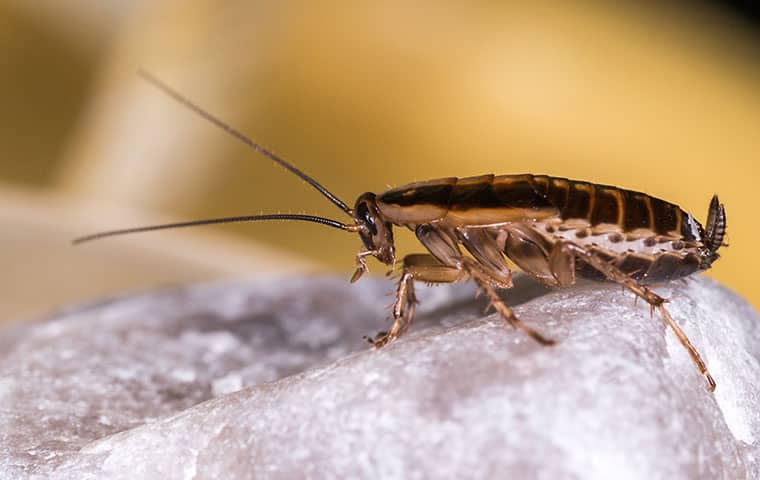
German Cockroaches
Understanding German Cockroaches: Identification and Behavior
German cockroaches are a type of roach found all across the United States. They're easily distinguishable from American cockroaches because of their small size. German cockroaches reach a length of 3/8 to 1/2 of an inch as adults, making them half the size of other cockroaches. Their color pattern is light brown all over, with twin dark stripes running along their backs. Nymphs, or immature cockroaches, may be darker in color. Like all cockroaches, they have six legs and two antennae. The speed at which they move is also a giveaway when trying to identify the type of cockroach you have in your home.
Health Risks: Are German Cockroaches Dangerous?
German cockroaches are dangerous to have in your home, as they spread disease and bacteria. Their main diet is made up of garbage, drain slime, and rotting food. Their sticky feet carry bacteria from their food source to all of the surfaces of the home that they touch. This means that as roaches move from your garbage can to your stovetop, they're carrying germs. German cockroaches are also able to transfer diseases from one home to another.

Hear From Our Happy Customers
At RAM Pest Control, your satisfaction is our priority! See for yourself what our customers have to say about working with us.
-
“- Techno N
Jake did a fabulous job. Very thorough and efficient. Great Job. Thanks!
” -
“- Joyce G
My tech Tate does a good job, he is knowledgeable, professional, funny and kind...always thinking about my dog's safety when spraying and very good at his follow up to check on my home! Big Thank you to Ram Pest Control and Tate!
” -
“- Candy A
Tate was exceptional. I look forward to to having him come on a monthly basis and working with him in the future. He took the time to answer all of my questions and was very knowledgeable and I really appreciated that. Thank you Tate...I look forward to
” -
“- Daniela K
Excellent pest control company in the valley!!!
” -
“He is always friendly, professional and very knowledgeable.”- Briana W.
-
“- Karna P
Very responsive and professional! I will always use these guys!!
” -
“- Richard G
This company is amazing. First, they actually answered their phone. I was able to get scheduled in 5 minutes. Nate was our technician. Very professional and knowledgeable of our snake issue. I cannot say enough good things about this company.
” -
“- Tyler S
Great team..very responsive and easy to work with. Explains each step of the way and what they are doing to fix the problem.
”

Why Choose RAM Pest Control?
-
Over 20 Years of Experience
-
Customer Care Focused
-
Locally Owned & Operated
-
Effective & Affordable
RAM Pest Control's Blog
Want all the latest news or updates? Browse through our blog to read our most recent posts and featured articles.




